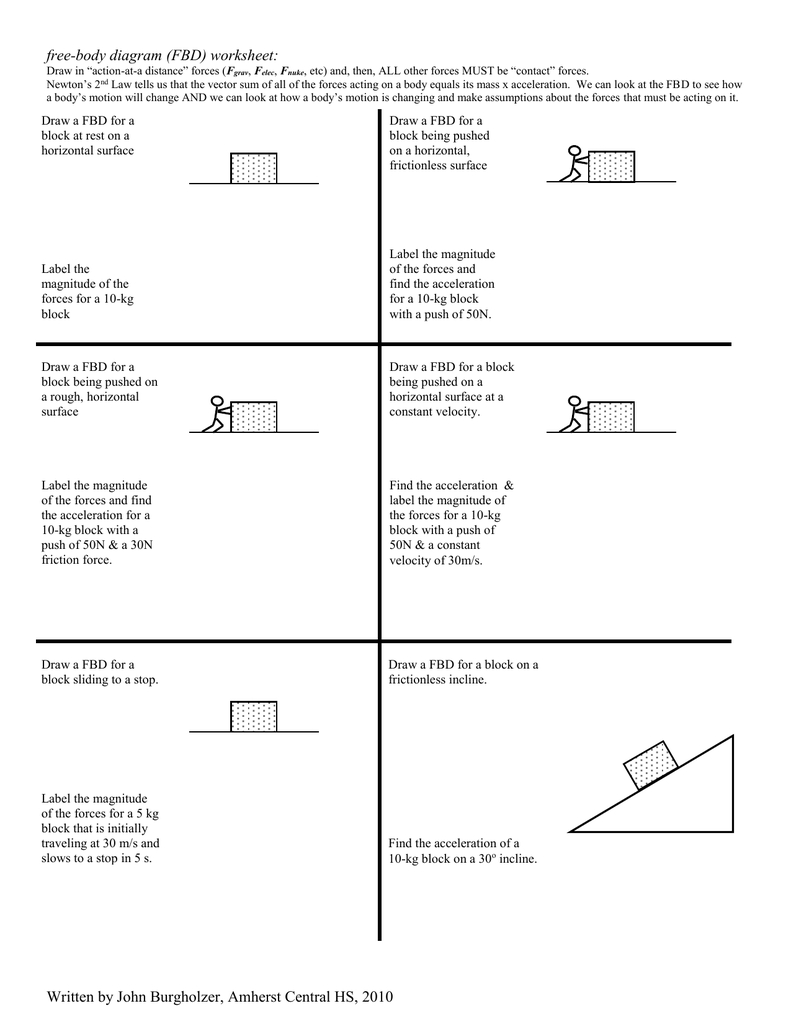

In part (c), we show all forces in terms of their x- and y-components, in keeping with step 3.įigure 5.32 (a) The free-body diagram for isolated object A. In part (b), we show a free-body diagram for this situation, as described by steps 1 and 2 of the problem-solving strategy. In Figure 5.31(a), a sled is pulled by force P at an angle of 30 ° 30 °. Let’s apply the problem-solving strategy in drawing a free-body diagram for a sled. You can label it in a different color to indicate that it is separate from the free-body diagram. Note: If there is acceleration, we do not directly include it in the free-body diagram however, it may help to indicate acceleration outside the free-body diagram. If there are two or more objects, or bodies, in the problem, draw a separate free-body diagram for each object.In this case, place a squiggly line through the original vector to show that it is no longer in play-it has been replaced by its x- and y-components. Convert the free-body diagram into a more detailed diagram showing the x- and y-components of a given force (this is often helpful when solving a problem using Newton’s first or second law).We never include both forces of an action-reaction pair. However, forces that the object exerts on its environment must not be included.

With the exception of gravity, all of the forces we have discussed require direct contact with the object. Do not include the net force on the object. Consider the types of forces described in Common Forces-normal force, friction, tension, and spring force-as well as weight and applied force. Include all forces that act on the object, representing these forces as vectors.We often place this point at the origin of an xy-coordinate system. If you are treating the object as a particle (no size or shape and no rotation), represent the object as a point. At first, you may want to draw a circle around the object of interest to be sure you focus on labeling the forces acting on the object. Draw the object under consideration it does not have to be artistic.Intended for classroom and personal use ONLY.Observe the following rules when constructing a free-body diagram: Clipart and elements found in this document are copyrighted and cannot be extracted and used outside of this file without permission or license. Failure to comply is a copyright infringement and a violation of the Digital Millennium Copyright Act (DMCA). This product may not be distributed or displayed digitally for public view. Copying for more than one teacher, classroom, department, school, or school system is prohibited. This product is to be used by the original downloader only. Enns Resources:īe sure to follow my TpT store by clicking on the Follow Me next to my seller picture to receive notifications of new products and upcoming sales.Ĭopyright © Douglas Enns. Quiz - F=MA (Newton's Second Law) Word ProblemsĬonnect with More Science With Mr. Quiz - Newton's Laws of Motion in Action (Part 2) Quiz - Newton's Laws of Motion in Action (Part 1) Quiz - Newton's Laws of Motion (Multiple Choice) Lab - Newton's Second and Third Laws of Motion Worksheet - Momentum (P=MV) Word Problems (Part 2) Worksheet - Momentum (P=MV) Word Problems (Part 1) Worksheet - Drawing Free Body or Force Diagrams Worksheet - Newton's Laws of Motion (An Introduction) Worksheet - What Are Forces? (An Introduction)

You Might Also Like the Following Unit Resources: Physical Science – Motion and Stability: Forces and Interactions Relevant CC Standard(s) and/or NGSS Core Idea(s) Addressed by This Product:
#Drawing free body diagrams worksheet pdf


 0 kommentar(er)
0 kommentar(er)
